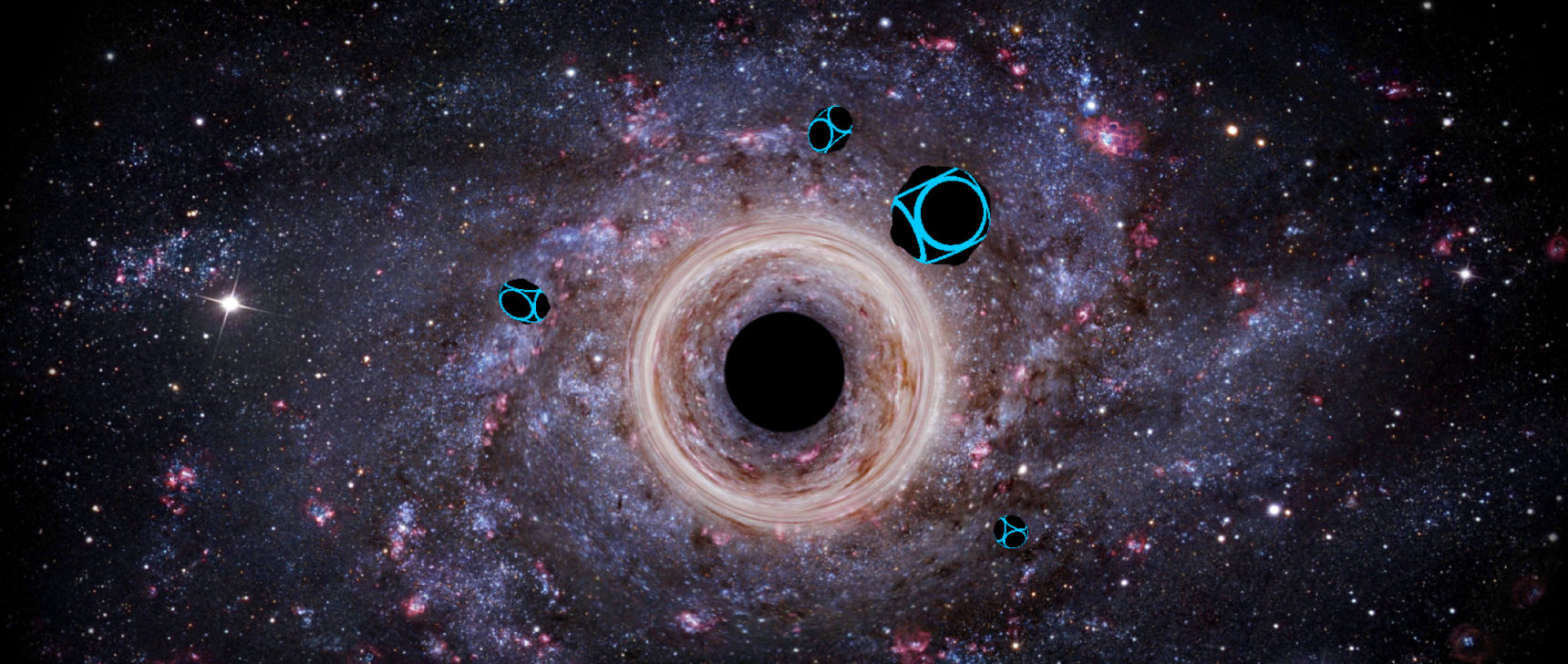What Bacteria Can Tell Us About Human Evolution

James O’Brien for Quanta Magazine
Introduction
It is human nature to want to know where we came from. Individually, we investigate our family lineages to discover ancestors lost to history. Collectively, scientists examine data from a vast array of sources, ranging from ancient fossils to current genomes, to determine where humanity itself originated, and how we came to be who and where we are as a species today.
In the past decade, studies in this area have been revolutionized by the plunge in gene sequencing costs. The human genome project began in 1990 and cost about $2.7 billion — roughly $100 million per sequenced genome. Today, a genome can be sequenced for approximately $1,000 to $2,000, and we’re nearing a longstanding goal of the $100 genome.
While much of the genomic work carried out to date has focused on genetic risk factors for health and disease, we can also use genetic reconstructions to examine the history of our species. But our own genes don’t necessarily tell us the whole story of our travels and migrations as a species or of the risks to our health.
For that reason, in recent years, researchers have paid much more attention to our “second genome”: that of our microbiota. Our microbiota are all of the microscopic organisms that live on and in us, playing a role in our digestion, training our immune system to correctly respond to pathogens, manufacturing key vitamins and taking up space that could otherwise be exploited by pathogens. Gut microbes are the “worlds within worlds” that have evolved alongside us, their hosts, as our early human ancestors moved from place to place, ate new foods and encountered new animals and environments. Our current microbiome (the collective genetic material of our microbiota) reflects some of that deep history.
Extreme Symbionts in Our Cells
We can glean information about human history from those organisms within us in several ways. One is by using the parts of our own cells that are, in essence, microbial: our mitochondria. These organelles can be considered “extreme symbionts”: They are remnants of microorganisms that once lived free but are now integral parts of all eukaryotic (complex) cells, producing energy and regulating metabolism.
Mitochondria retain their own DNA, separate from that of the cell’s nucleus. For many types of research, this mitochondrial DNA (mtDNA) is preferable to nuclear DNA as an object of study. Unlike our nuclear DNA, it isn’t a mixture of our parents’ genetic material. Because mtDNA is inherited exclusively from the egg and passed down through generations of the maternal lineage, it’s more akin to a clone of your mother (and her mother, and her mother and so on). And while eukaryotic cells have only one copy of nuclear DNA in their singular nucleus, they have many mitochondria and therefore multiple copies of each mtDNA gene. Because the mtDNA genome is much smaller than nuclear DNA (containing only about 37 genes instead of 20,000 or so in humans), it is also simpler to analyze.
Analysis of mtDNA in the 1980s led to the conclusion that humanity originated in Africa, dating back to a common maternal ancestor somewhere around 100,000 to 200,000 years ago. Though widely accepted today, this declaration was controversial at the time, as some biologists and anthropologists thought that modern humans evolved as a collective from diverse but interbreeding populations of archaic humans scattered throughout the Old World (the “multiregional hypothesis”).
Microbes in our bodies can also help elucidate humanity’s ancestral journeys, because they too are inherited within families and have long been associated with human populations. One example is Helicobacter pylori, a stomach bacterium that can cause ulcers and gastric cancer, but which can also be carried without symptoms in many individuals. H. pylori is transmitted from person to person, probably by saliva (oral-oral route) or contact with feces (fecal-oral route), and possibly by contaminated food or water. Other Helicobacter species colonize the guts of mammals, which suggests a lengthy co-evolution between these types of bacteria, humans and our relatives. In the past, H. pylori likely colonized a very high percentage of humans, but its prevalence has decreased in many countries over the past century because of improvements in sanitation and hygiene.
Studies during the past 15 years have examined the evolution of H. pylori by collecting and sequencing strains of the bacterium from individuals all around the world. Researchers found that H. pylori collected in Africa contained the most genetic diversity (just as human populations from East Africa do), and that one could retrace basic human migrations out of that continent and around the globe by examining the genetic makeup of this bacterium. Genomic analysis also pointed to the bacterium having co-evolved with humans for approximately 60,000 years — since close to the time when modern humans began migrating out of Africa, and carrying H. pylori and other bacteria along for the ride. We can therefore use the genome of H. pylori to figure out the evolutionary history of some human populations.
Retracing Our Past in Their Genes
Why do this when we can look at human bones or genomes to get that information? For one, it’s a powerful confirmation of the correctness of a hypothesis when genomic data from two different organisms tell the same story, especially when those organisms are as different as a human and a bacterium are. In addition, sometimes the data from one genome can fill in gaps that the other data set can’t resolve. Data from H. pylori genomes were able to differentiate two ethnic communities in Ladakh, India, for instance, when the available human genetic markers at the time could not.
Today, rather than looking at a single variety of microbe, looking at the massed collection of all of them may better inform our knowledge of where we humans have been as a species, and where we may be going. The idea of the holobiont — the host and all its associated microbes, analyzed as a single hologenome — is taking shape as we’re starting to understand the thousands of microbial species that can live in and on our bodies.
Our microbiota do not just reflect human evolution — they affect it: Through our associated microbes, we can acquire abilities that are beneficial to populations. A 2010 study, for example, found that many individuals from Japan have a gene in their gut microbes that allows them to produce an enzyme that helps to break down carbohydrates from seaweed more efficiently. This gene is absent from the guts of people from North America, where (unlike in Japan) seaweed is not a dietary staple.
The gene may have been acquired by a human gut bacterium, Bacteroides plebeius, possibly from the marine bacterium Zobellia galactanivorans. Zobellia could have been ingested long ago by individuals in Japan, entering their gut either as a whole bacterium or in pieces, including as free DNA. Because bacteria can acquire genes through a process known as horizontal gene transfer, Bacteriodes may have picked up this gene in the gut environment. The gene could then have benefited both the bacterium and the host by opening up an additional source of nutrition, and as such would have been maintained in the population by natural selection.
Microbial Mismatches
As we begin to grasp the interactions between our microbes and our ancestors since time immemorial, we may be able to use these deep symbioses not only to interpret our history, but also to shape our future health outcomes. H. pylori can be a cause of gastric cancer, but its propensity to promote cancer development appears to be a function of how well the bacterial strain “matches” its host. In a study examining gastric cancer and H. pylori in Colombia, researchers found that African strains of H. pylori were more likely to cause cancer in the Colombian population — but those same strains were not frequently carcinogenic in Africans. This observation points toward the possibility of preventing gastric cancers on an individualized basis by minimizing the risks from mismatches between hosts and their bacteria.
Now that we are moving to a deeper awareness of the presence and function of our indigenous microbes, we are starting to see how these long-term symbioses have contributed to who we are today. Recent research has confirmed that for the microbiome as a whole, closely related organisms have a more similar microbiome makeup than those more distantly related. The microbiome as a whole could one day help us understand evolutionary relationships among species.
Although the power of the microbiome to aid our understanding of disease-related conditions is frequently touted, the idea that our microbes may be able to inform us about ancestors lost in history may be its most intriguing application.



